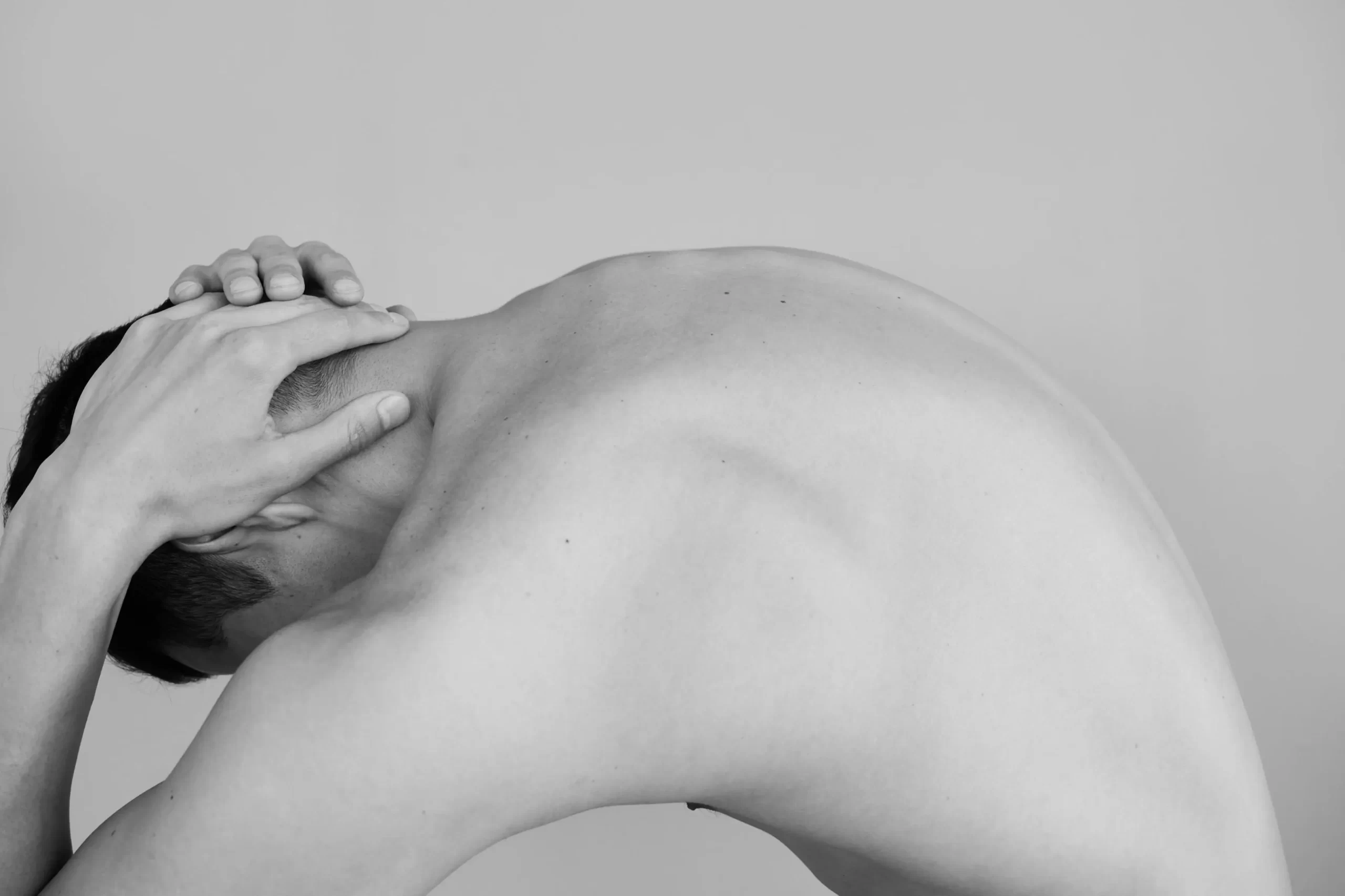Bulging and herniated discs are common degenerative spine problems that can cause a lot of pain and discomfort.
Knowing the differences between these two conditions is important for getting the right treatment.
In this article, we’ll explain what sets a bulging disc apart from a herniated disc, their symptoms, causes, and the best treatment options.
Let’s jump in!
What is a Bulging Disc?
A bulging disc happens when the a degenerated outer layer of a spinal disc weakens and starts to bulge out.
This can press on nearby nerves, causing pain and discomfort.
Symptoms might include:
- Back pain
- Numbness
- Tingling in your arms or legs
Common causes include:
- Getting older
- Poor posture
- Repetitive movements
What is a Herniated Disc?
A herniated disc, sometimes called a slipped or ruptured disc, occurs when the inner gel-like core of the disc pushes through a tear in the outer layer.
This can lead to severe pain and nerve irritation.
It’s quite similar to bulging discs in how it happens.
Symptoms may include:
- Sharp pain
- Weakness
- Numbness, especially in your arms or legs
Common causes are:
- Heavy lifting
- Sudden movements
- Back injuries
Differences in Symptoms & Causes
Both bulging and herniated discs can cause similar symptoms, but herniated discs often lead to more intense pain and nerve problems because of the leaking disc material.
That is the main difference between a bulging disc vs. herniated disc!
Bulging Disc vs. Herniated Disc Treatment Options
There are many great treatment options, many of which we offer for bulging and herniated discs at Southwest Pain Management:
Non-Surgical Treatments:
- Physical Therapy: Get personalized exercise programs to strengthen your back muscles and improve flexibility, helping to reduce pressure on your discs.
- Chiropractic Care: Chiropractors can provide gentle spinal adjustments to realign your spine and reduce pain.
- Pain Management: We offer a range of pain management options, including medications and minimally invasive procedures like corticosteroid injections.
- Medical Massage Therapy: Our therapeutic massage techniques help relieve pain, improve circulation, and reduce muscle tension around the affected discs.
Advanced Treatments:
- Discseel Procedure: This innovative treatment uses a special biologic to repair damaged discs and seal tears, preventing further leakage and promoting healing. It’s a great option for those wanting to avoid surgery.
- Spinal Decompression Therapy: This non-surgical treatment gently stretches your spine to relieve pressure on the discs and nerves, helping your body heal naturally.
- Functional Rehabilitation: Our comprehensive programs are designed to restore your function and mobility through targeted exercises and activities.
- Interventional Procedures: Minimally invasive techniques like nerve blocks and radiofrequency ablation help manage pain and improve your quality of life.
Prevention Tips
Preventing disc problems involves living a healthy lifestyle and practicing good ergonomics:
- Lifestyle Changes: Maintain a healthy weight, exercise regularly, and practice good posture to support your spine.
- Ergonomic Tips: Set up your workspace to minimize back strain, use supportive furniture, and lift objects safely.
How Southwest Pain Management Can Help
At Southwest Pain Management, we’re committed to providing personalized care and a wide range of services to help you manage and overcome your spinal issues:
- Personalized Care: We create customized treatment plans tailored to your specific needs and conditions.
- Comprehensive Services: We offer a variety of non-surgical and minimally invasive treatments for both bulging and herniated discs.
- Expert Team: Our dedicated team of healthcare professionals specializes in pain management and spine health, ensuring you get the best care possible.
Conclusion
Understanding the differences between bulging and herniated discs is key to getting the right treatment and preventing future problems.
Southwest Pain Management is here to provide personalized care and a wide range of treatment options to help you find relief and improve your quality of life.
Contact us today to schedule a consultation and start your journey to pain relief!
FAQs
What is worse, bulging or herniated disc?
A herniated disc is generally considered worse than a bulging disc because the inner gel-like core of the disc leaks out through a tear in the outer layer, causing more severe pain and nerve irritation. Bulging discs typically cause less severe symptoms as they only involve the outer layer of the disc bulging out.
How do you tell if a disc is bulging or herniated?
A disc bulge involves the outer layer of the disc bulging outward, while a herniation involves the inner gel-like core leaking through a tear in the outer layer. Medical imaging such as MRI is needed to accurately diagnose whether a disc is bulging or herniated.
Can a disc bulge turn into a herniation?
Yes, a disc bulge can progress into a herniation if the outer layer of the disc continues to weaken and eventually tears, allowing the inner core to leak out.
Can a bulging disc heal?
A bulging disc can heal with appropriate treatment, which may include physical therapy, chiropractic care, pain management, and lifestyle changes. The disc may not return to its original shape, but symptoms can improve significantly.
Can you feel a bulging disc by touch?
You cannot feel a bulging disc by touch because it is located deep within the spine. Diagnosis requires medical imaging such as MRI to visualize the affected disc.
Can an MRI tell the difference between a bulging disc and a herniated disc?
Yes, an MRI can distinguish between a bulging disc vs. herniated disc. It provides detailed images of the spine’s soft tissues, showing whether the disc is bulging outward or if the inner core has leaked through a tear.
How painful is a bulging disc?
The pain from a bulging disc can range from mild to severe, depending on how much it compresses nearby nerves. Symptoms can include localized pain, numbness, and tingling in the affected areas.
What is the best relief for a bulging disc?
The best relief for a bulging disc often includes a combination of physical therapy, chiropractic care, pain management, and lifestyle modifications. Treatments like the Discseel procedure, medical massage therapy, and spinal decompression can also be effective.
Can walking fix a bulging disc?
Walking can help alleviate symptoms of a bulging disc by promoting circulation and reducing stiffness, but it is unlikely to fix the disc completely. A comprehensive treatment plan is usually needed for optimal healing and relief.





